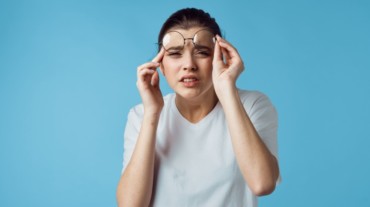
When a child is diagnosed with myopia (near-sightedness), the first and foremost concern of the parents is whether it is curable or reversible. Parents also worry about whether the child have to wear glasses for his her lifetime? To understand the answer to this question, we need to know the various causes of myopia.
Myopia or near-sightedness is a common eye problem in which a child must wear minus powered glasses. There are three main types of myopia.
1. Axial myopia: This refers to the condition when the size of the eyeball increases and becomes more than what is normal for the age of the child. This is the most common type of myopia.
2. Corneal myopia: In this type of myopia, the anterior most part of the eye (the cornea) becomes steeper due to pathological conditions like keratoconus or keratoglobus. Very often, this type of myopia is associated with high astigmatism (cylindrical power) due to change in the shape of the cornea as well.
3. Lentincular myopia: Here, the crystalline lens of the eye is abnormal in shape or location. In all the three types of myopia, the end result is that the rays of light focus on a plane which is in front of the retina leading to blurring of vision. Mild grades of myopia affect only the distance vision. However, with severe grades of myopia, the vision is affected for all the viewing distances.
Also read: Nearsightedness can increase risk of developing cataract complications

The million dollar question? Is myopia curable or reversible? Well, it also depends on the type of myopia you have.
The corneal type of myopia due to keratoconus has specific treatment available wherein the corneal collagen is strengthened to prevent the progression of the corneal steepening. In advanced stages, a corneal grafting may have to be done.The myopia in such cases may reduce after the treatment, but the patient continues to require spectacles or contact lenses for clear vision.
The lenticular myopia can be treated by lens surgery in which the abnormal lens is replaced by normal shaped lens. The myopia will reduce after the surgery, but the patient will require glasses to focus for near reading.
Axial myopia is increasing at an alarming rate across the world. The reasons postulated for this boom in myopia in the recent times are lifestyle changes. These include excessive near work and lack of outdoor exposure, especially during the Covid-19 restrictions. Since the reason for this type of myopia is the elongation of the eyeball, one can understand that the eyeball cannot be reduced in size by any medications or surgery. Thus, once myopia occurs it cannot be reversed.
Select Topics of your interest and let us customize your feed.
PERSONALISE NOWIn fact, axial myopia tends to progress with age. The scary part of the elongation of the eyeball is that in severe myopia (eyeball size > 26mm) the risk of retinal complications of myopia like retinal detachment and retinal degenerations increase manifold. So, the focus of treatment for myopia is to prevent the
progressive eyeball elongation.

The rate of progression varies between different populations and is seen to be more in Asian countries as compared to Western world. The various risk factors for progression of myopia are:
* Presence of parental myopia (when parents are also myopic)
* A higher degree of myopia at onset
* Younger age at onset
* Excessive near work
Children with myopia should be encouraged to avoid long hours of near work like reading story books, using digital devices, or drawing and painting.
The recommendations are total of 4-5 hours of near work, including school-related work. Increasing outdoor activities would engage them in alternative sources of entertainment and expose them to natural sunlight which is protective. They should practise good reading habits such as reading in an upright posture, and with proper illumination. Additionally, nighttime reading should be avoided.
Although the lifestyle modifications mentioned above are important, they may not be sufficient to retard the progression of myopia in many children. Follow these tips to improve a child’s vision.

Certain pharmacological and optical methods can slow down the progression of myopia. These include certain eye drops as well as specialised myopia control spectacles and contact lenses.
Your child’s eye doctor would be able to guide regarding what is most suitable. A combination of the methods may be required in children with very high progression rates.
The glasses can be removed with refractive surgery like LASIK (laser-in-situ keratomileusis), ICL (implantable contact lenses) or CLE (clear lens extraction). These surgeries can be performed only after the growth of the eyeball stops and the eye power is stable. This usually happens after 18-20 years of age. Before that, it is important to control the elongation of the eyeball through the various modalities mentioned above to reduce the risk of sight threatening complications of myopia.